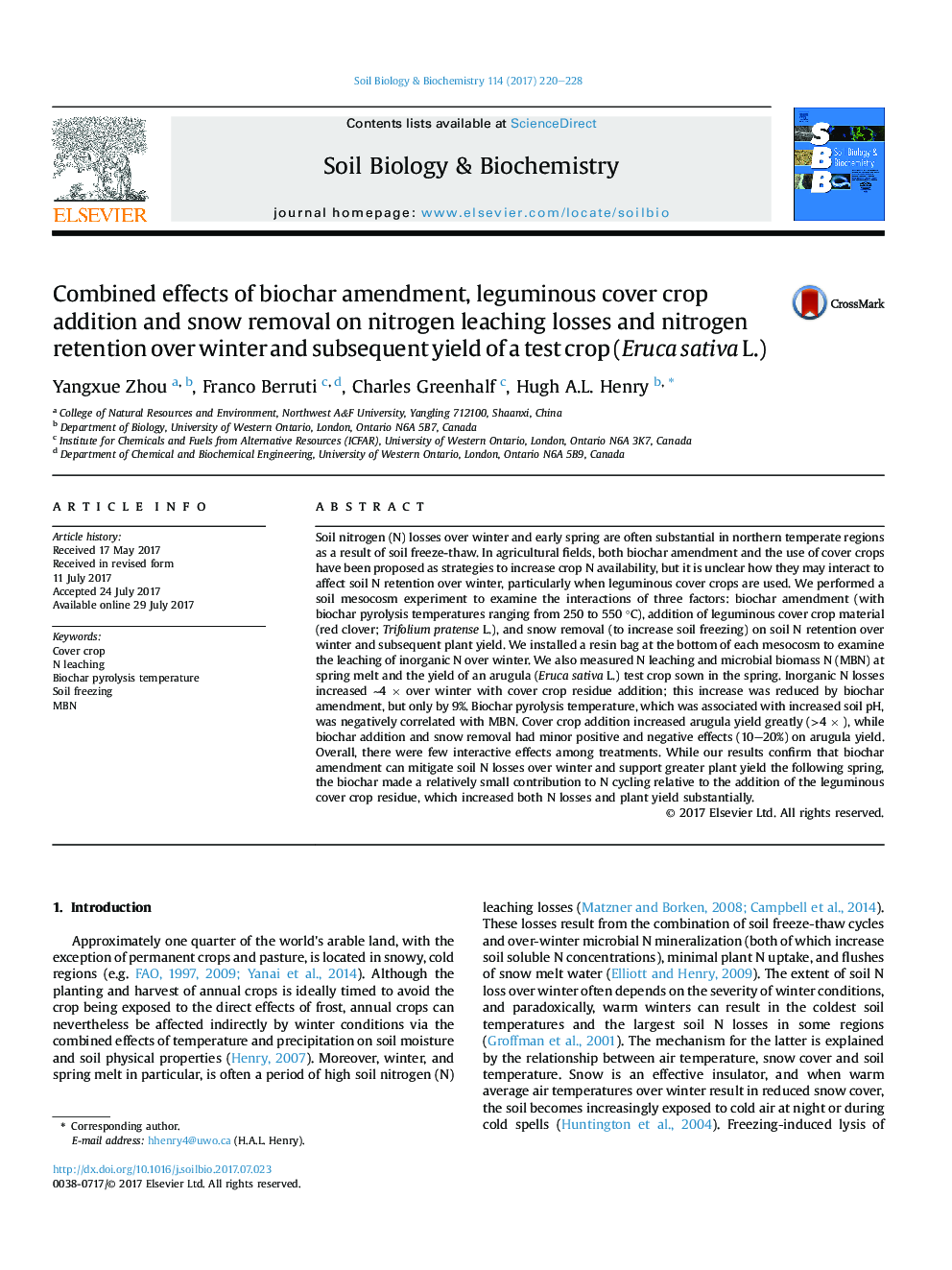| کد مقاله | کد نشریه | سال انتشار | مقاله انگلیسی | نسخه تمام متن |
|---|---|---|---|---|
| 5516322 | 1542570 | 2017 | 9 صفحه PDF | دانلود رایگان |

- Leguminous cover crops increased N availability, but increased soil N losses over winter.
- Biochar addition increased over-winter soil N retention and increased crop yield.
- Biochar pyrolysis temperature was negatively correlated with microbial biomass N.
Soil nitrogen (N) losses over winter and early spring are often substantial in northern temperate regions as a result of soil freeze-thaw. In agricultural fields, both biochar amendment and the use of cover crops have been proposed as strategies to increase crop N availability, but it is unclear how they may interact to affect soil N retention over winter, particularly when leguminous cover crops are used. We performed a soil mesocosm experiment to examine the interactions of three factors: biochar amendment (with biochar pyrolysis temperatures ranging from 250 to 550 °C), addition of leguminous cover crop material (red clover; Trifolium pratense L.), and snow removal (to increase soil freezing) on soil N retention over winter and subsequent plant yield. We installed a resin bag at the bottom of each mesocosm to examine the leaching of inorganic N over winter. We also measured N leaching and microbial biomass N (MBN) at spring melt and the yield of an arugula (Eruca sativa L.) test crop sown in the spring. Inorganic N losses increased â¼4 Ã over winter with cover crop residue addition; this increase was reduced by biochar amendment, but only by 9%. Biochar pyrolysis temperature, which was associated with increased soil pH, was negatively correlated with MBN. Cover crop addition increased arugula yield greatly (>4 Ã ), while biochar addition and snow removal had minor positive and negative effects (10-20%) on arugula yield. Overall, there were few interactive effects among treatments. While our results confirm that biochar amendment can mitigate soil N losses over winter and support greater plant yield the following spring, the biochar made a relatively small contribution to N cycling relative to the addition of the leguminous cover crop residue, which increased both N losses and plant yield substantially.
Journal: Soil Biology and Biochemistry - Volume 114, November 2017, Pages 220-228